We can be earthworms
No gardener complains about having too many earthworms. "They eat too much!" or "They poop too much!" are never uttered, when it comes to these lowly residents of the soil. Earthworms help cycle nutrients faster through the system, converting plant matter to nutrition.
We can do that too.
More than ten years ago, I watched a no-nonsense TEDx-talk with Nick Ritar. (https://www.milkwood.net/2011/10/31/nick-ritars-tedx-canberra-talk-two-things-you-can-do-every-day-to-save-the-world/) He talked about the linear phosphate path of industrial civilization and how we flush out the most valuable nutrients into the sea. How industrial Man has moved out of the original niche of a fruit-nut-and-fish eater and garden fertilizer, to become a force of destruction on epic scale. The solution was as simple as provocative - urine diverting compost toilets. Huh?
At first, I thought he exaggerated the impact of our s***. It couldn't possibly be that bad, at least not in our civilized corner of the globe, I thought to myself. So, at the first possible opportunity I visited the local wastewater treatment plant and talked to the people who worked there. It was not as good as I had previously believed.
A 90% reduction of nitrogen seemed impressive, but when they explained that the nitrogen is transformed from plant-usable nitrates and ammonia by de-nitrification bacteria into nitrogen gas, I was baffled. By blowing air through the effluents, we destroy this precious nutrient resource.
From an energy point of view it is madness: First we use fossil gas to convert nitrogen gas in the air into nitrates. Then we put energy into a bassin to help bacteria transform nitrates into nitrogen gas.
The phosphate side of the story was even worse.
During the literature review of humanure handling, I came back to "Farmers of Forty Centuries", where FH King describes the practices of the peoples in east Asia who have been growing food in the same place for 4000 years. One common theme of those cultures was that they returned their bodily outputs to the soil.
During this time, I also found the recently published "Planetary Boundaries" by Rockström et al., where second largest threat to civilization was shown to be nitrates and phosphates that pollute rivers, lakes and oceans.
I realized that this was a problem of civilizational collapse proportions.
Nick Ritar from the TEDx presentation looked kind of like me, and I thought - if he can do this, so can I.
The challenge was addressed in a small part when we lived in a townhouse in town, but since moving to the countryside, we have been able to reuse more and more of our personal deliveries.
During the springs, we combine our leeking with biochar to use as foundation in garden beds, and we compost our solid wastes in buckets for two years before applying them to our fruit trees and bushes. (Strangely enough, humanure is not approved for organic farming, so we cannot use it in our commercial nut tree nursery.) The whole winter, we collect our golden liquids in vats, waiting for May to come around when the plants are hungry for nitrogen.
Wetland
This year in April, we finalized another part of the water system, an artificial wetland for all greywater. We dug a pond with a liner and filled it with volcanic porous rock, and planted reeds and bulrush. The greywater enters on one side, and exits on the other. The pond is 2x5 meters, and is quite a lot larger than needed for only greywater. Our neighbour Edvin came in with his excellent excavator skills and helped dig and connect the pipes. My friend Palle also helped with the installation and manual digging.
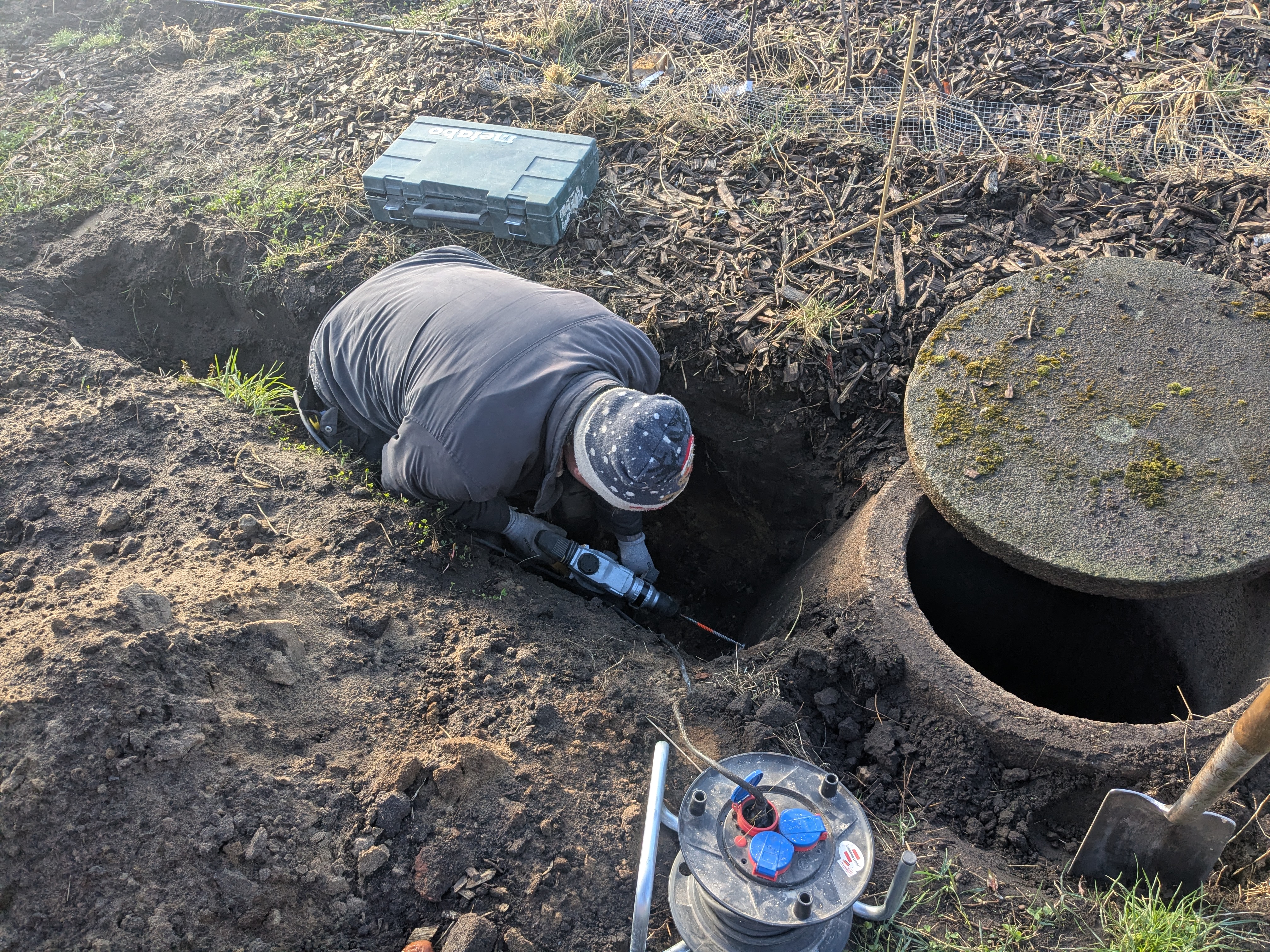 First our friend Micke helped to make a new hole in the output drain.
First our friend Micke helped to make a new hole in the output drain.
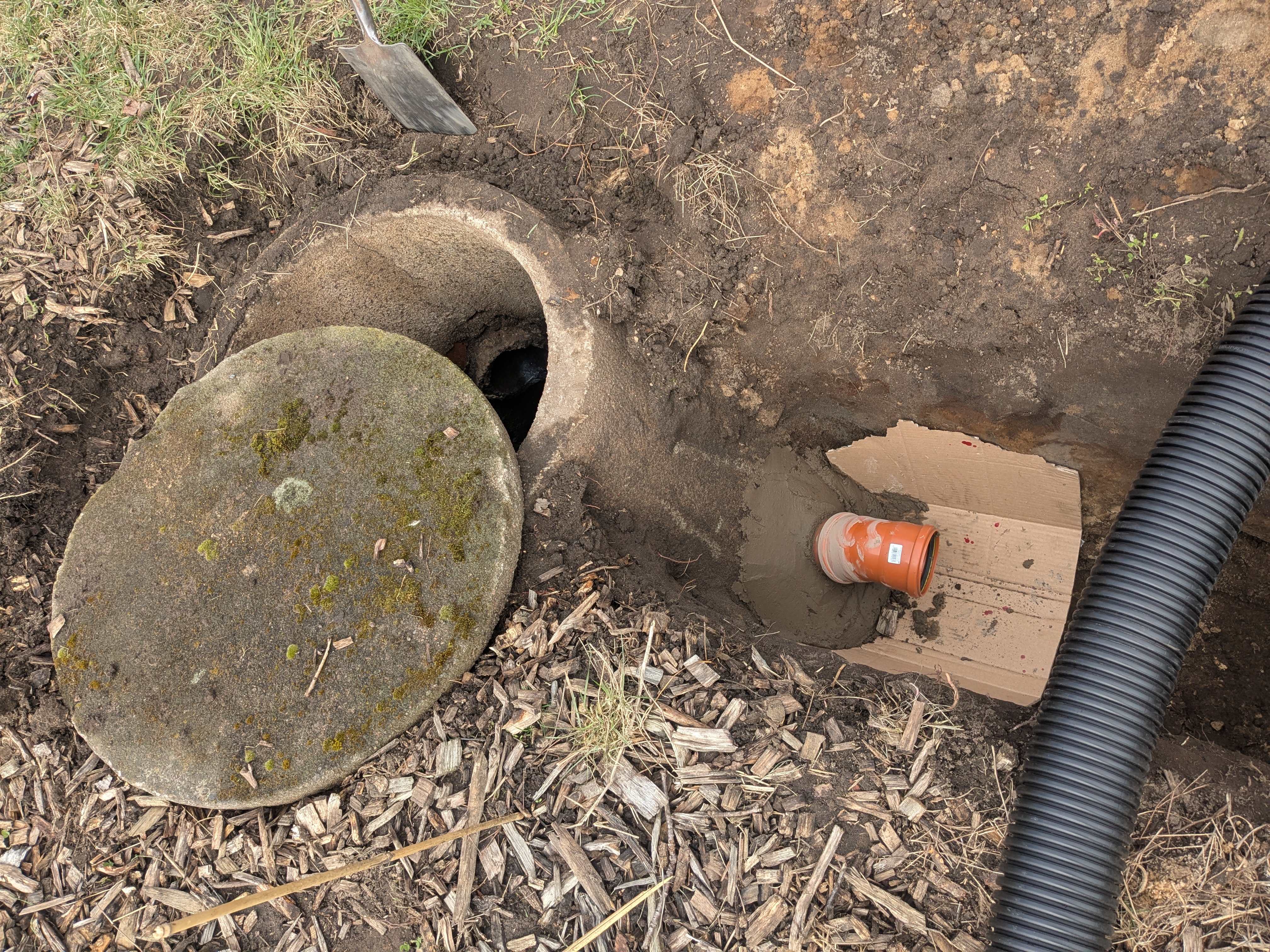 New drain pipe. This is where the clean water will exit the wetland, into the ground water well.
New drain pipe. This is where the clean water will exit the wetland, into the ground water well.
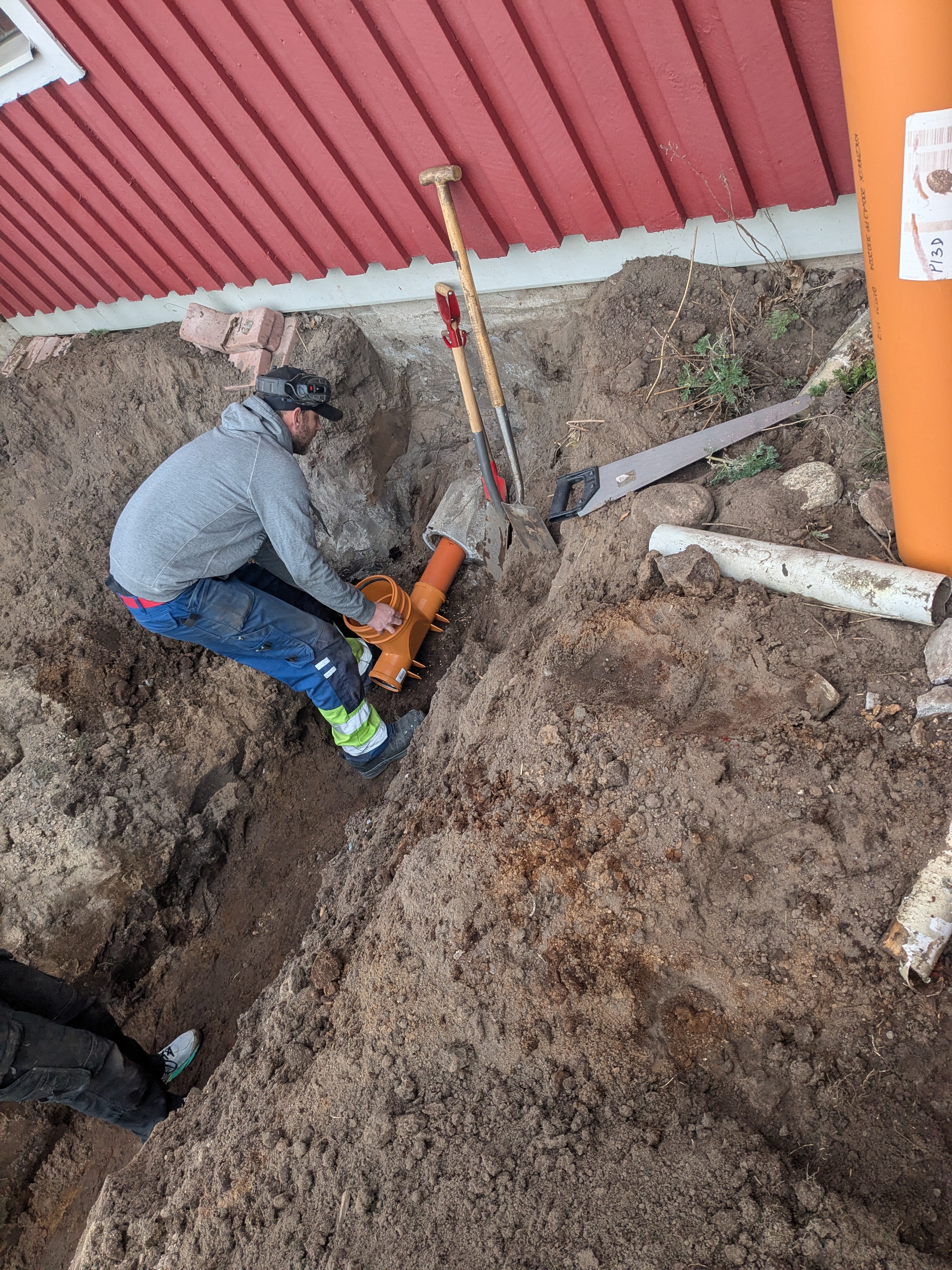 Edvin the Digger helps to connect, by inserting a PP pipe inside the crackled cement tube.
Edvin the Digger helps to connect, by inserting a PP pipe inside the crackled cement tube.
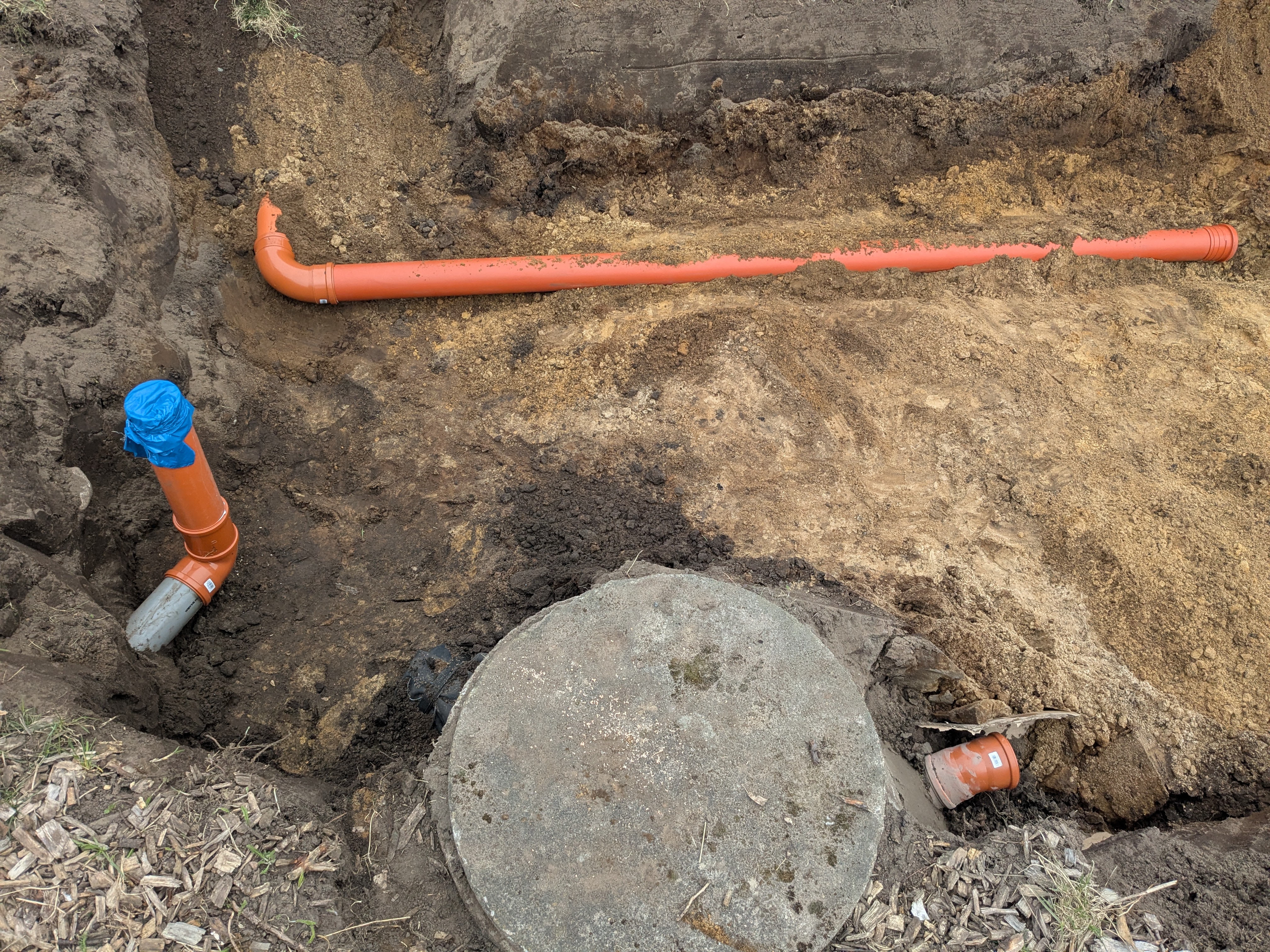 The blue marked pipe on the left was an "irregular" overflow into the stormwater system, draining the fields of our neighbours. It is not good for waste water, but now we have the basis for a better stormwater system on our farm!
The blue marked pipe on the left was an "irregular" overflow into the stormwater system, draining the fields of our neighbours. It is not good for waste water, but now we have the basis for a better stormwater system on our farm!
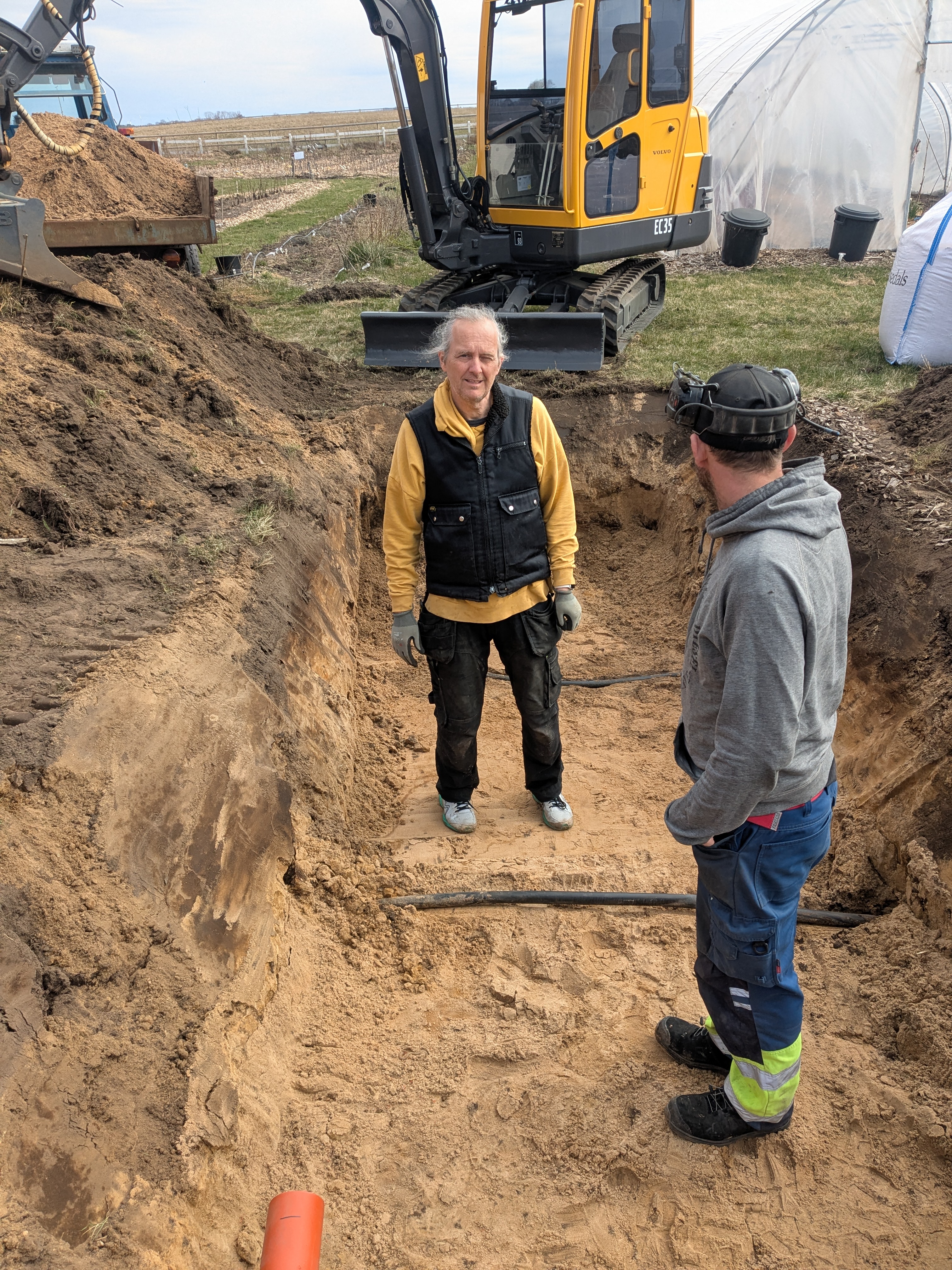 The black pipes on the bottom of our new wetland are part of a ground-heat heatpump system that can heat our house. Good to know where these tubes are. We got no maps from the previous owner...
The black pipes on the bottom of our new wetland are part of a ground-heat heatpump system that can heat our house. Good to know where these tubes are. We got no maps from the previous owner...
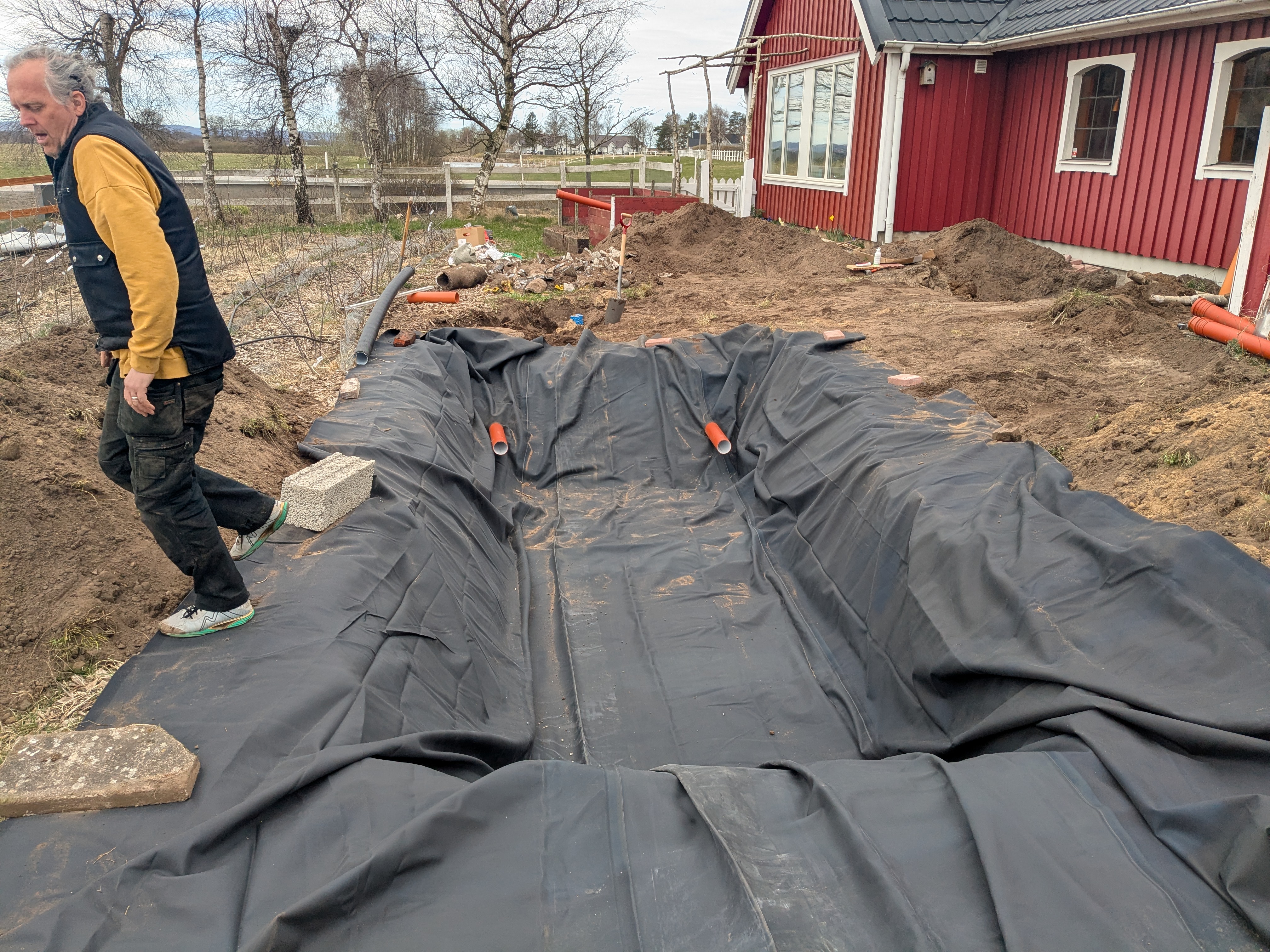 Empty wetland, a pond-liner lined pond.
Empty wetland, a pond-liner lined pond.
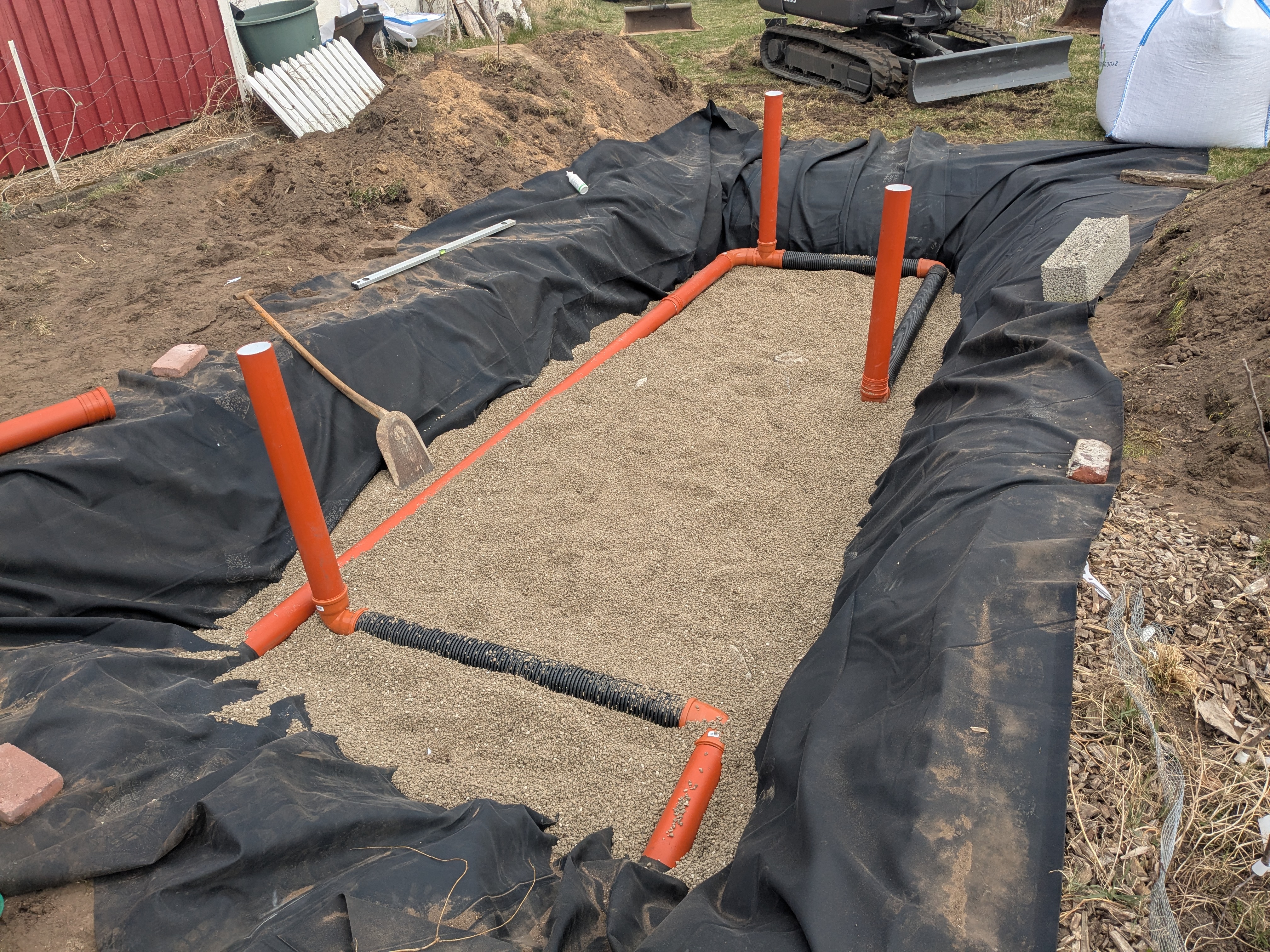 Incoming water (far end of the picture) and outgoing water collected with the black pipe (closest).
Incoming water (far end of the picture) and outgoing water collected with the black pipe (closest).
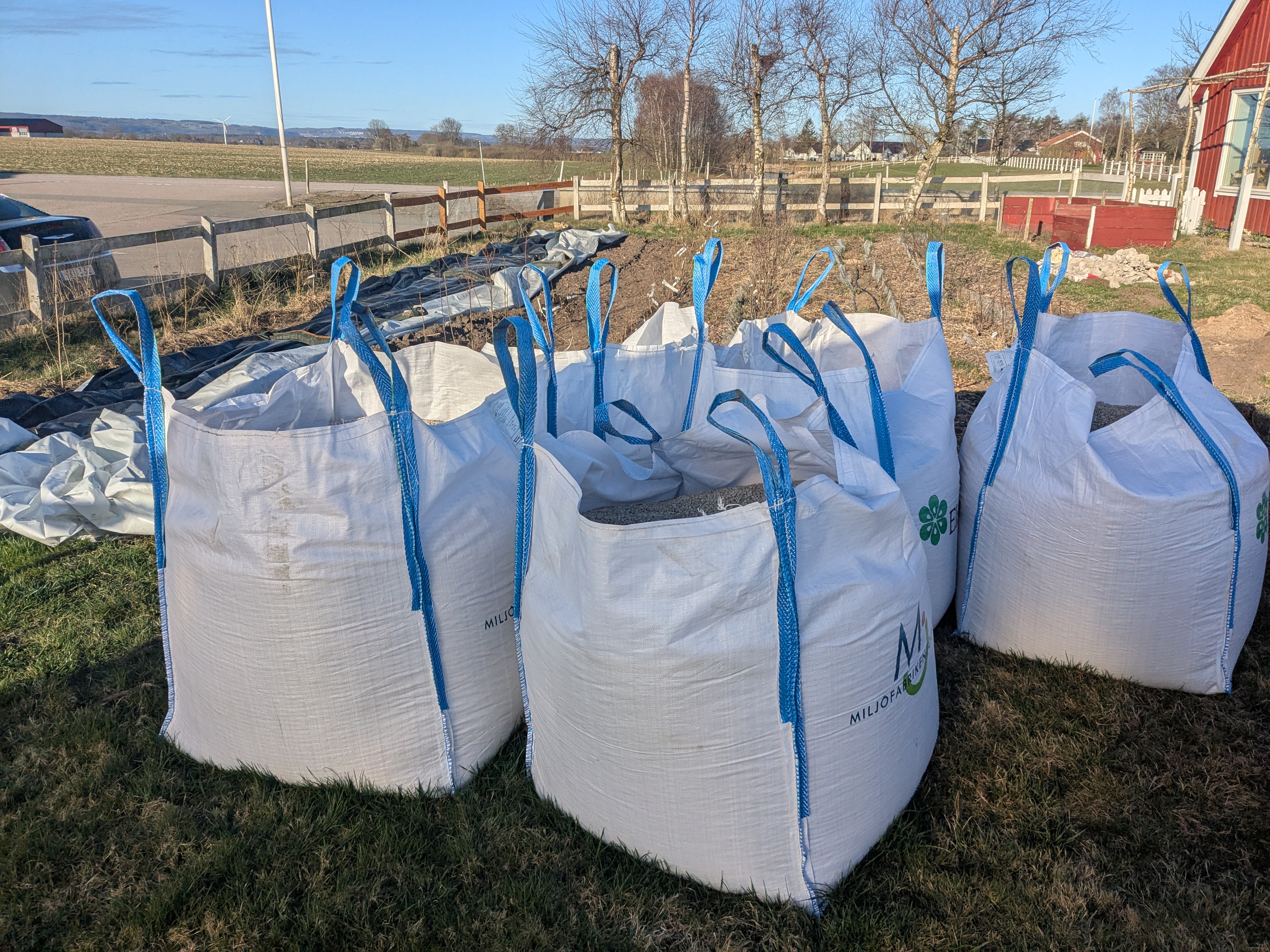 Volcanic rock is of low density, but still quite heavy.
Volcanic rock is of low density, but still quite heavy.
 All you can see is a liner border, some cleaning pipes, volcanic rock and the first strands of bulrush.
All you can see is a liner border, some cleaning pipes, volcanic rock and the first strands of bulrush.
Nuts
Nut course at Holma Community College
We spent a weekend at Anders' place, where he is developing an ecological nut forest.
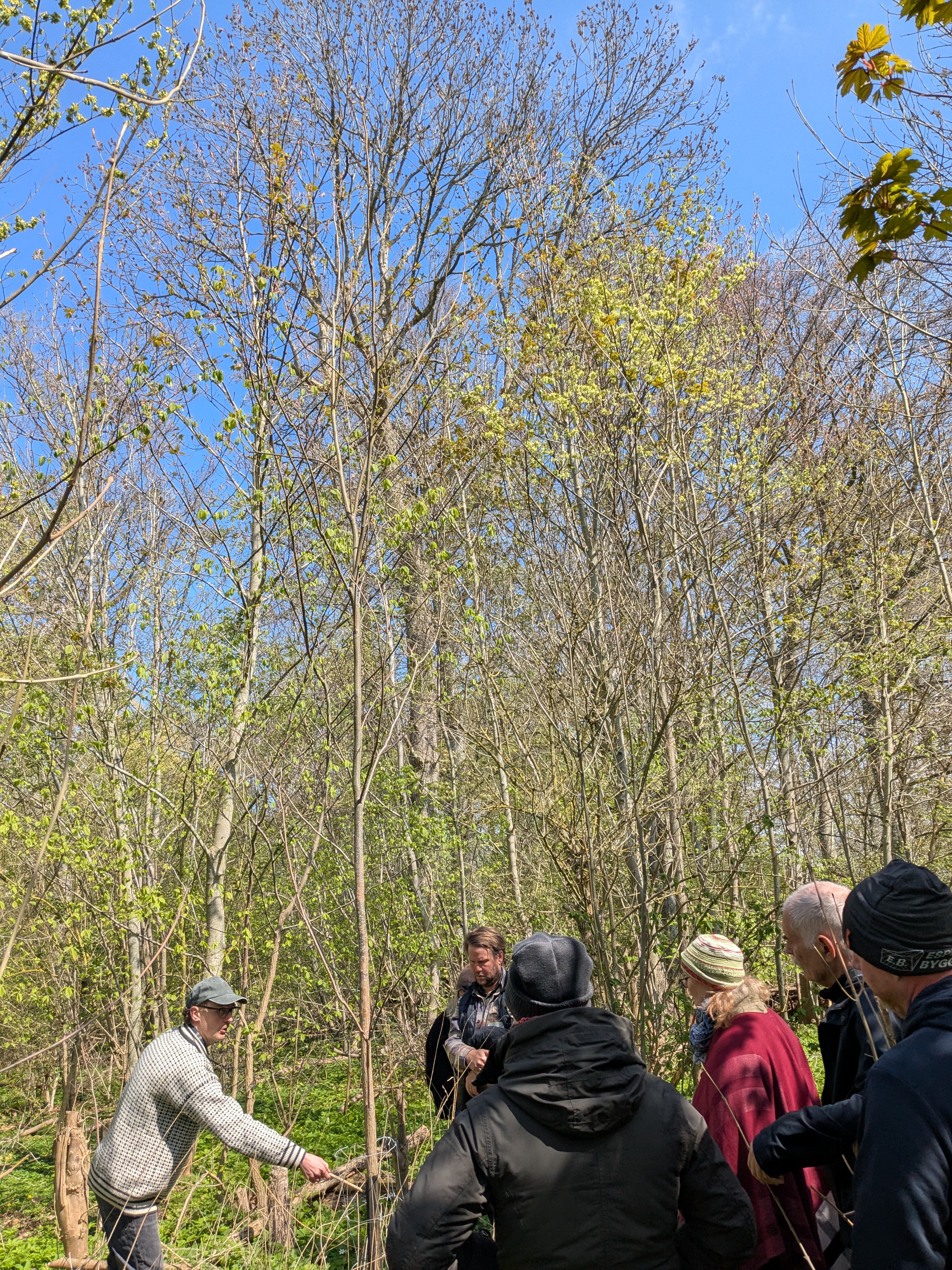 A hickory nut tree in Anders park forest.
A hickory nut tree in Anders park forest.
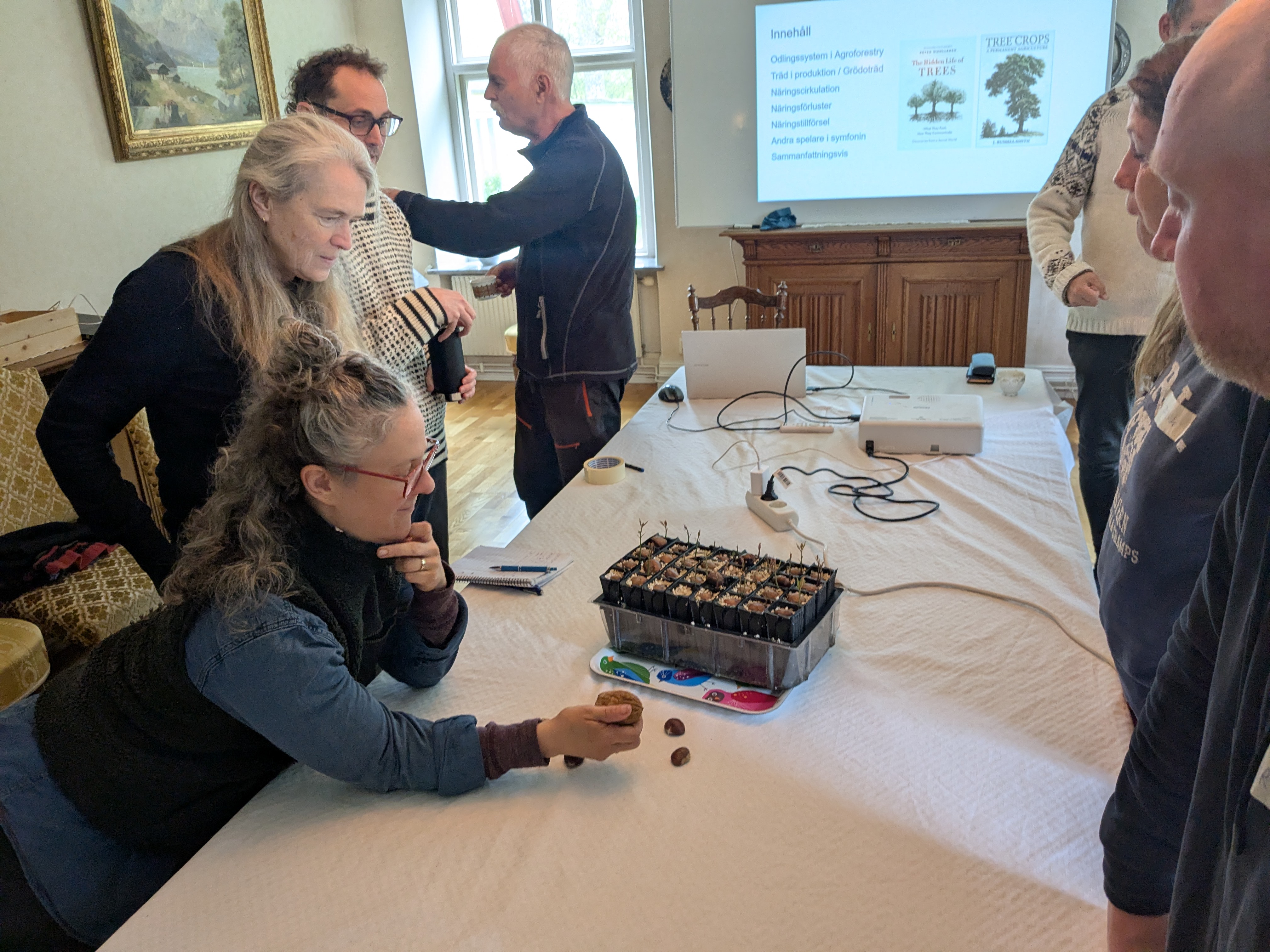 Anders seeded some of his own chestnuts to make new trees.
Anders seeded some of his own chestnuts to make new trees.
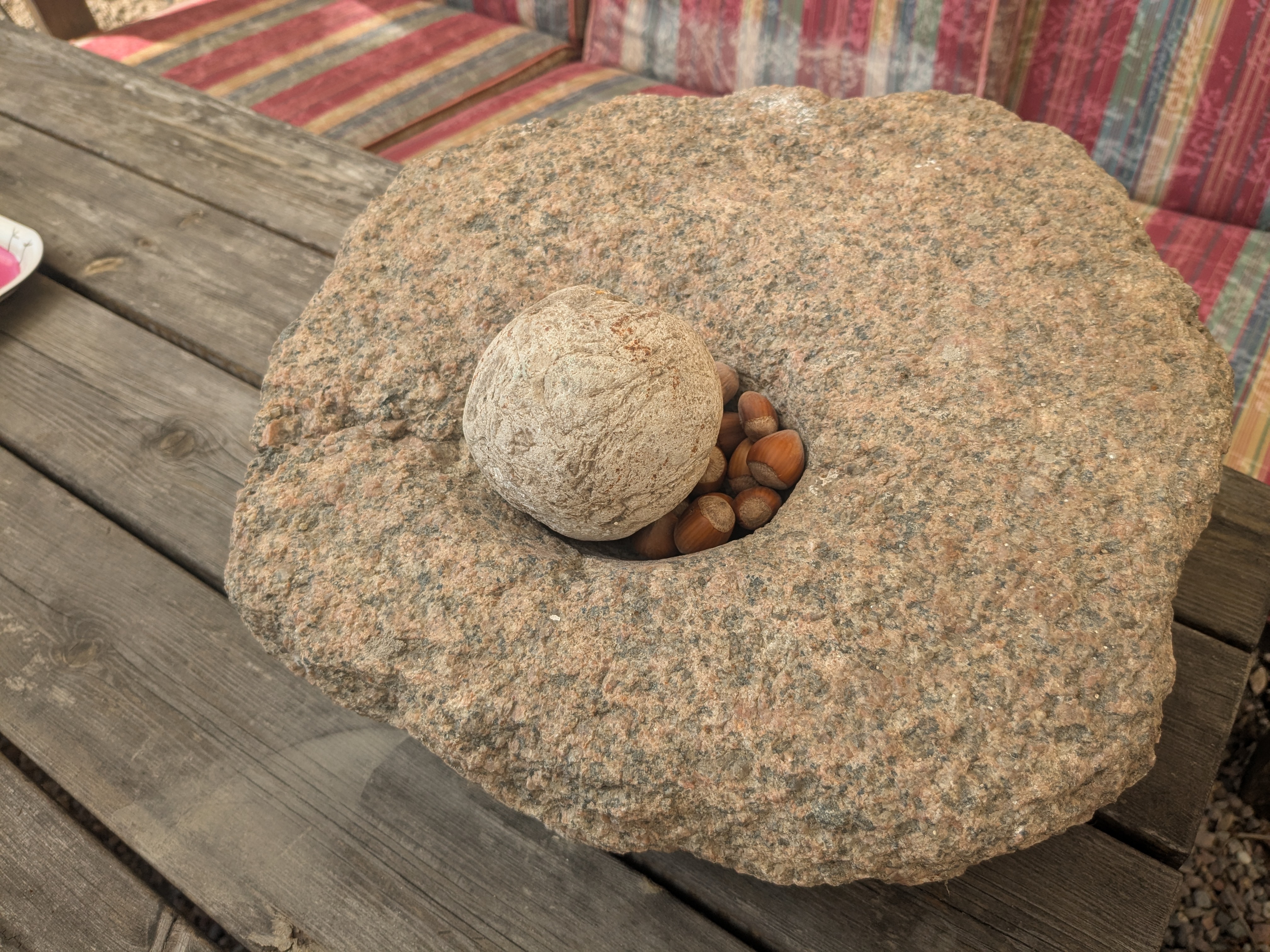 A stone age (?) implement that was dug out of the clay soil at Anders' place. We think it was an ancient nut cracker.
A stone age (?) implement that was dug out of the clay soil at Anders' place. We think it was an ancient nut cracker.
Nut growing instruction material
We are collecting a lot of material to help farmers get started growing nuts.
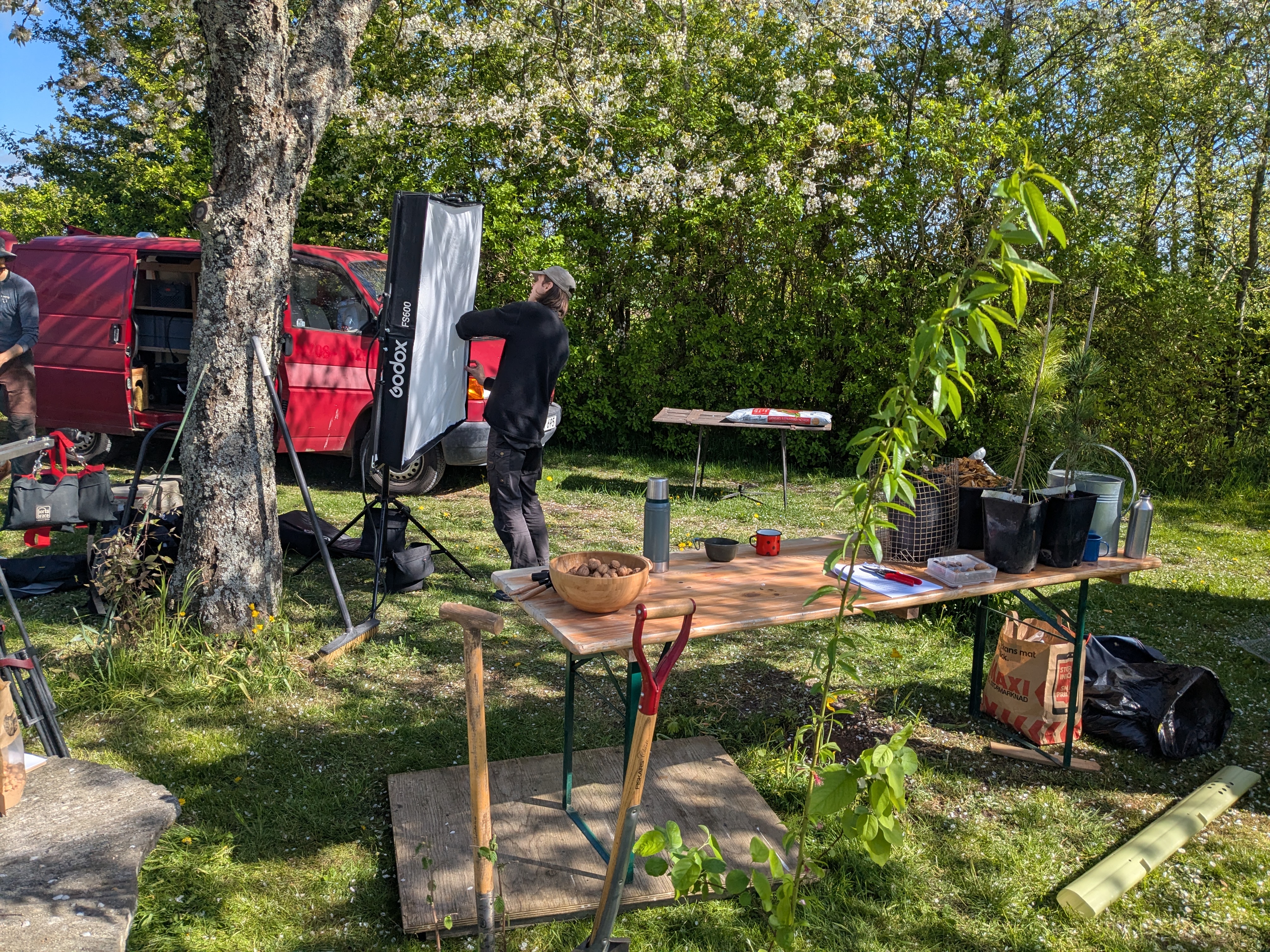 Together with Simon and Joan, I made a series of instruction films, probably next month on Utoob.
Together with Simon and Joan, I made a series of instruction films, probably next month on Utoob.
 We also made a leaflet together with Håkan, one of the hazelnut pioneers in Sweden.
We also made a leaflet together with Håkan, one of the hazelnut pioneers in Sweden.
Chestnuts
It is also season for grafting chestnuts. Here we did some in-situ grafting at Gun's place.
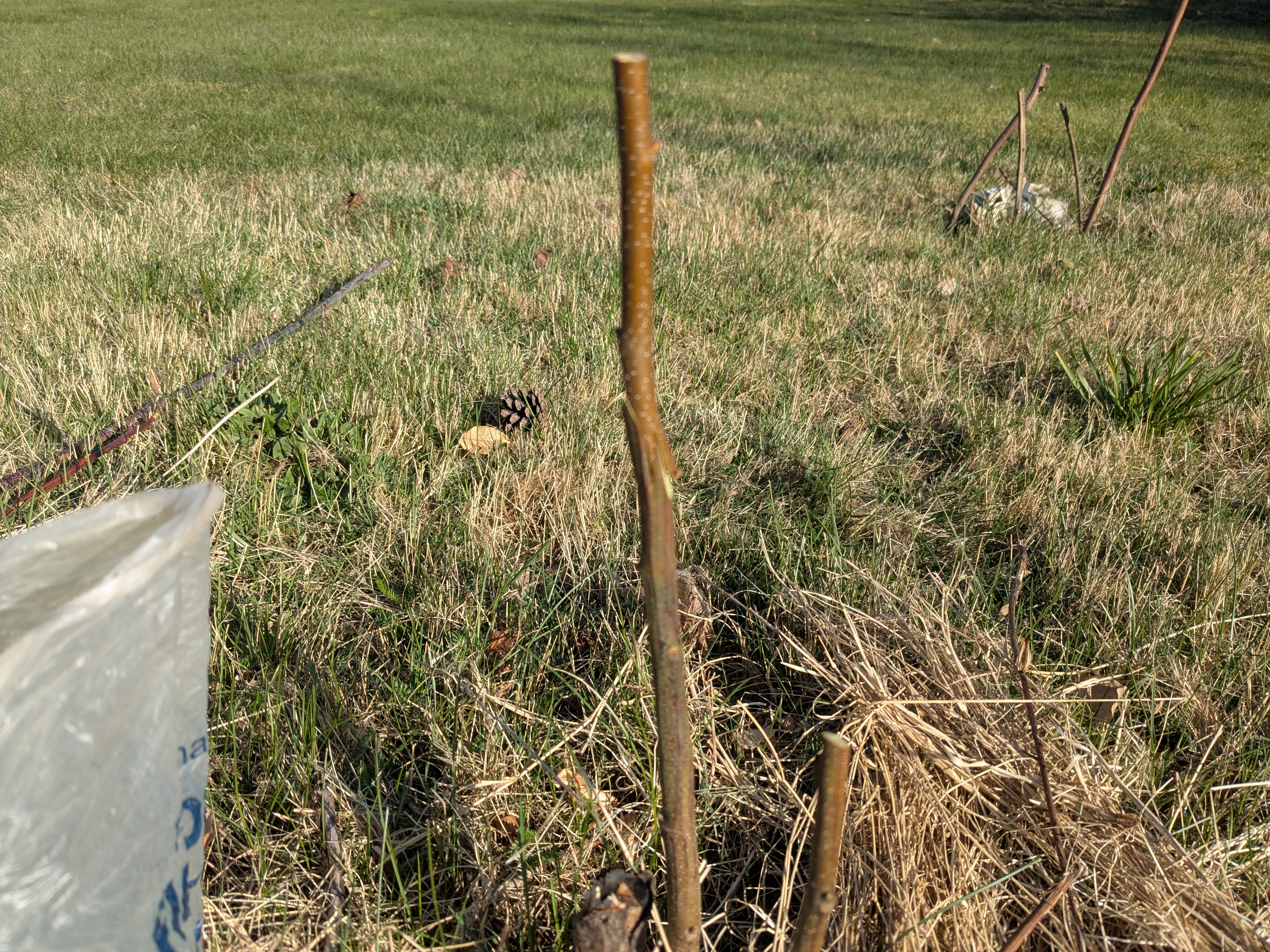 I usually do the Z-grafting technique. (I apologize for the blur.)
I usually do the Z-grafting technique. (I apologize for the blur.)
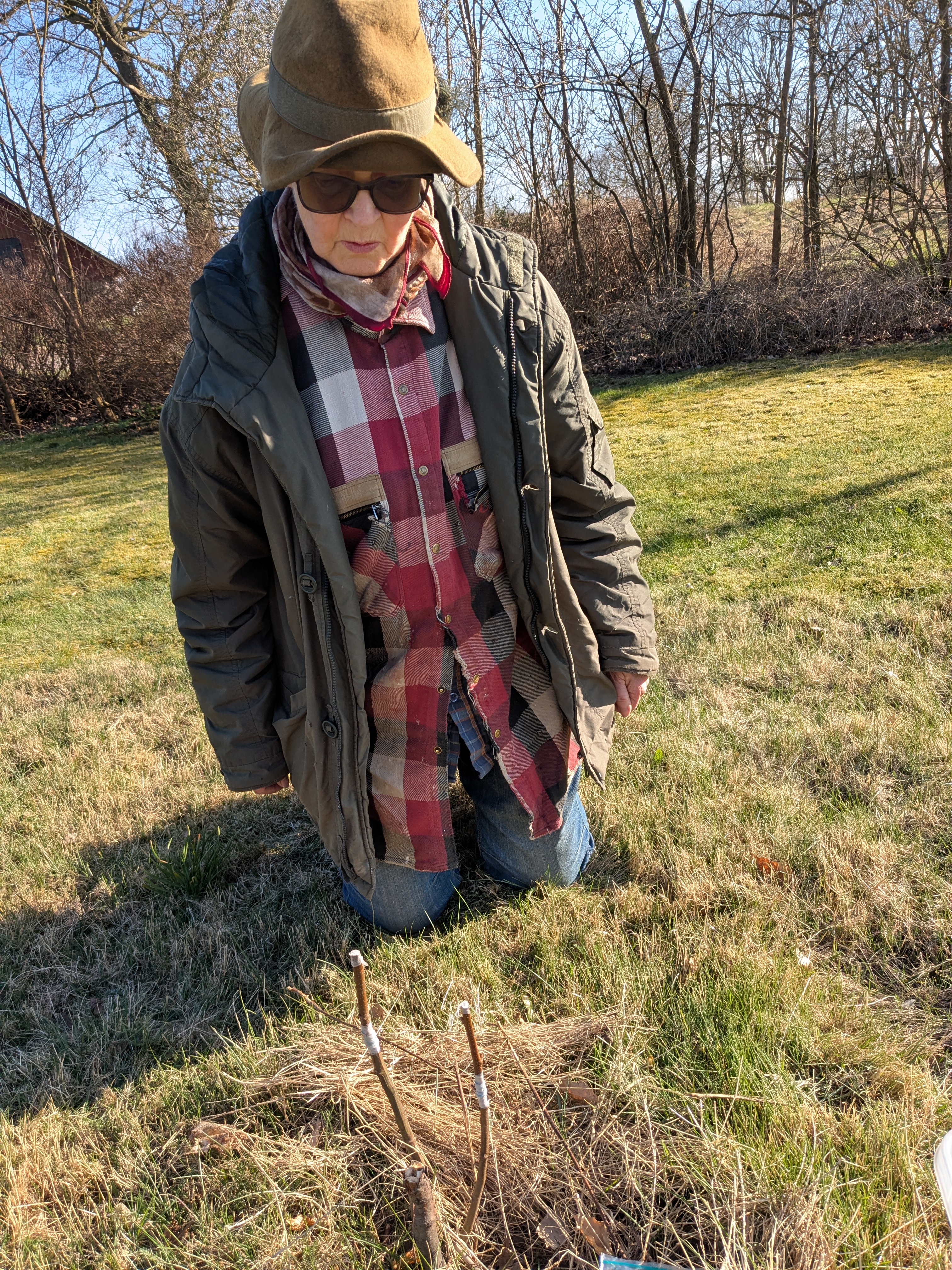 Gun is taking great care of the trees.
Gun is taking great care of the trees.
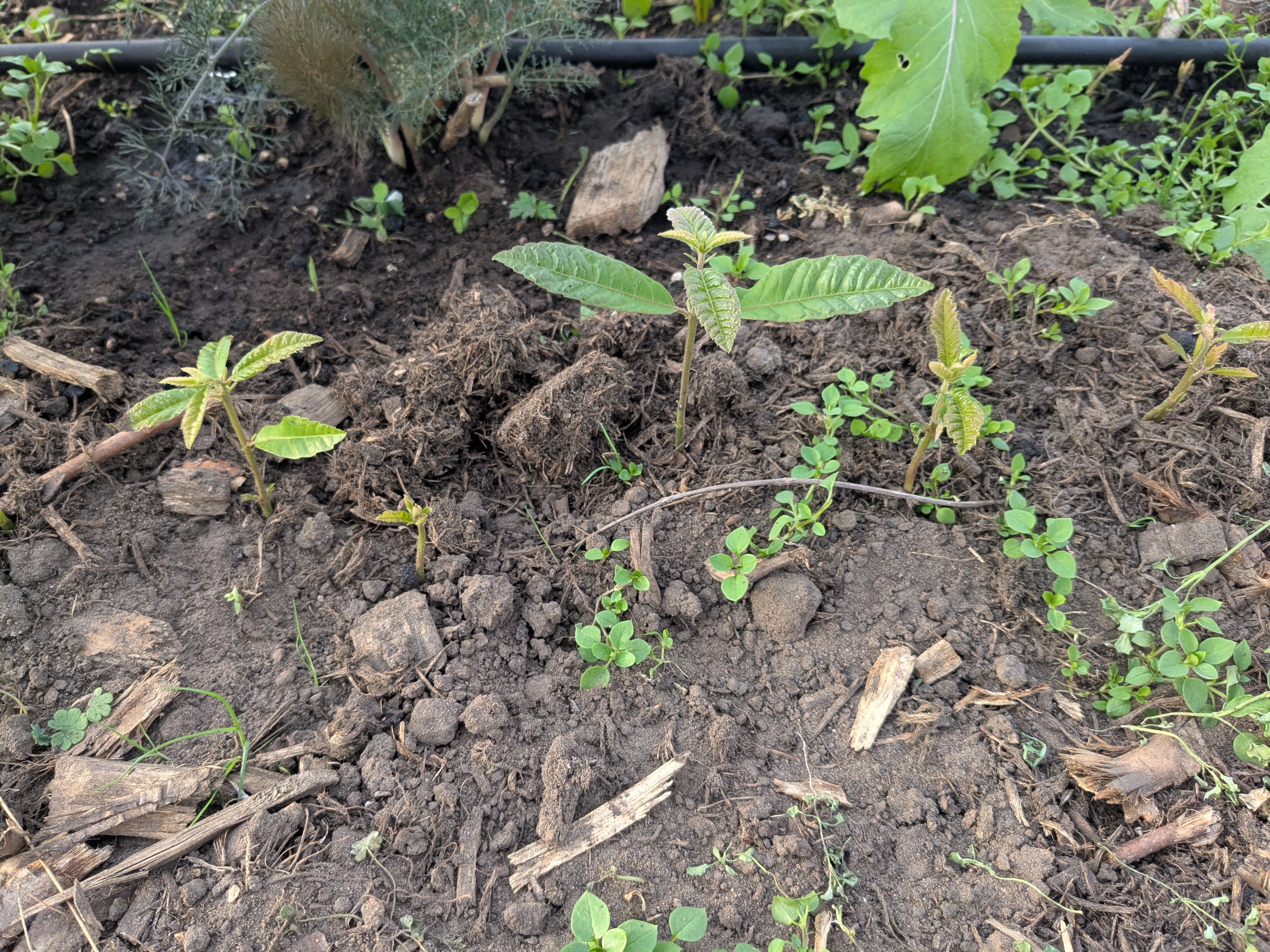 In the tunnel, the chestnut seedlings start to come out.
In the tunnel, the chestnut seedlings start to come out.
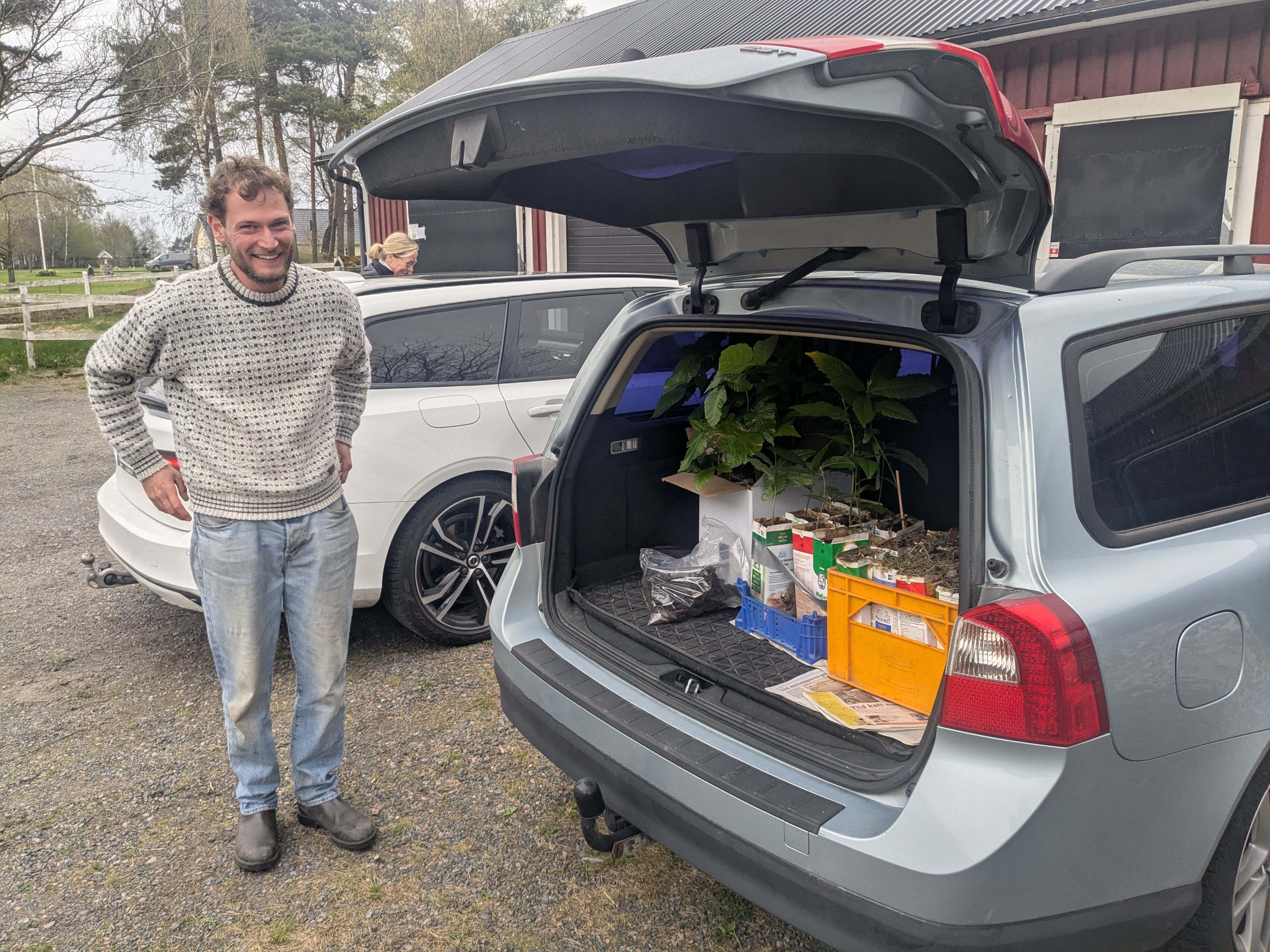 Axel, a young enthousiastic nut tree grower, came by to practice grafting.
Axel, a young enthousiastic nut tree grower, came by to practice grafting.
Walnuts
We are grafting walnuts mainly in April.
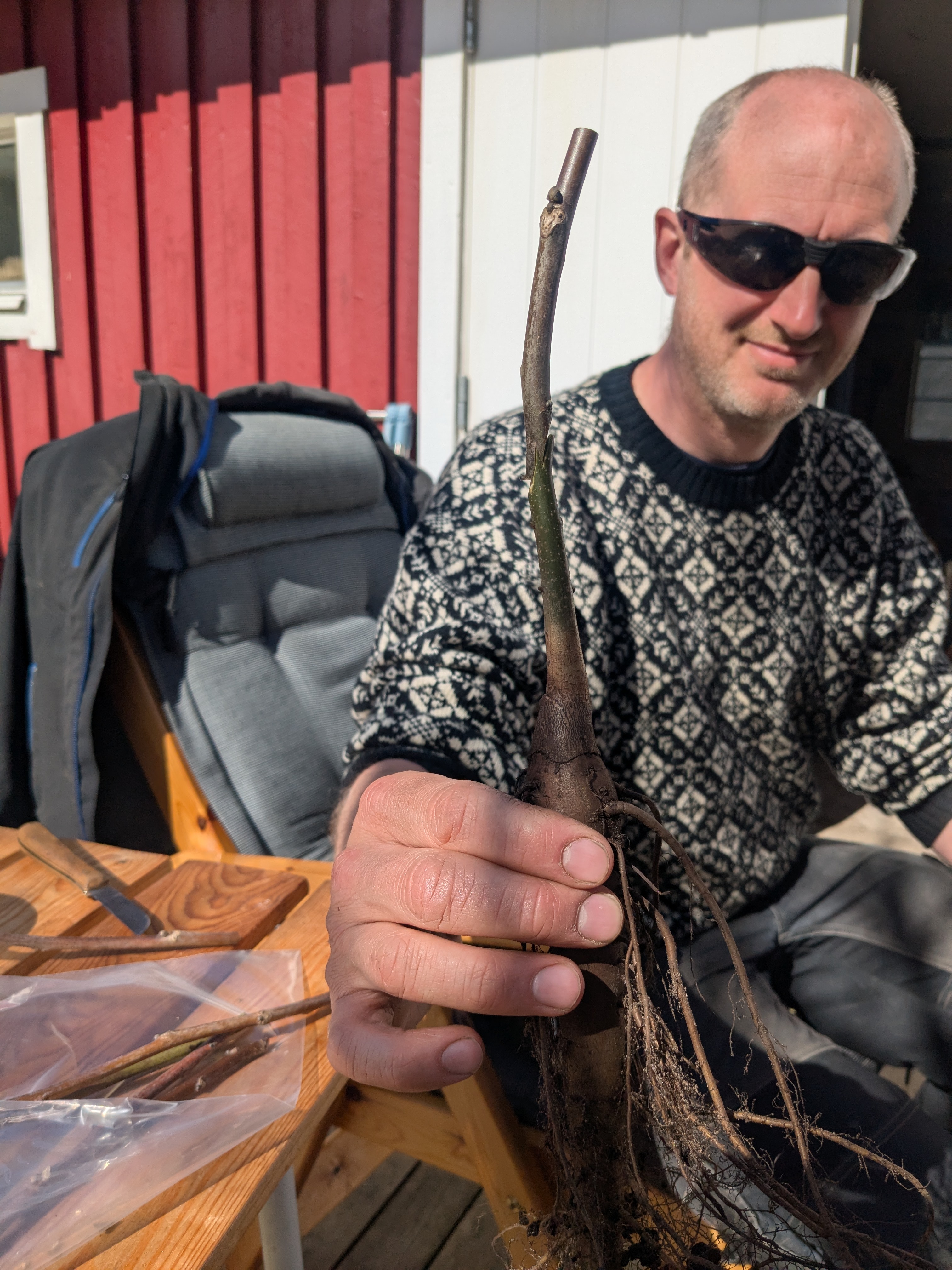 Intern Daniel shows off his Z-graft skills.
Intern Daniel shows off his Z-graft skills.
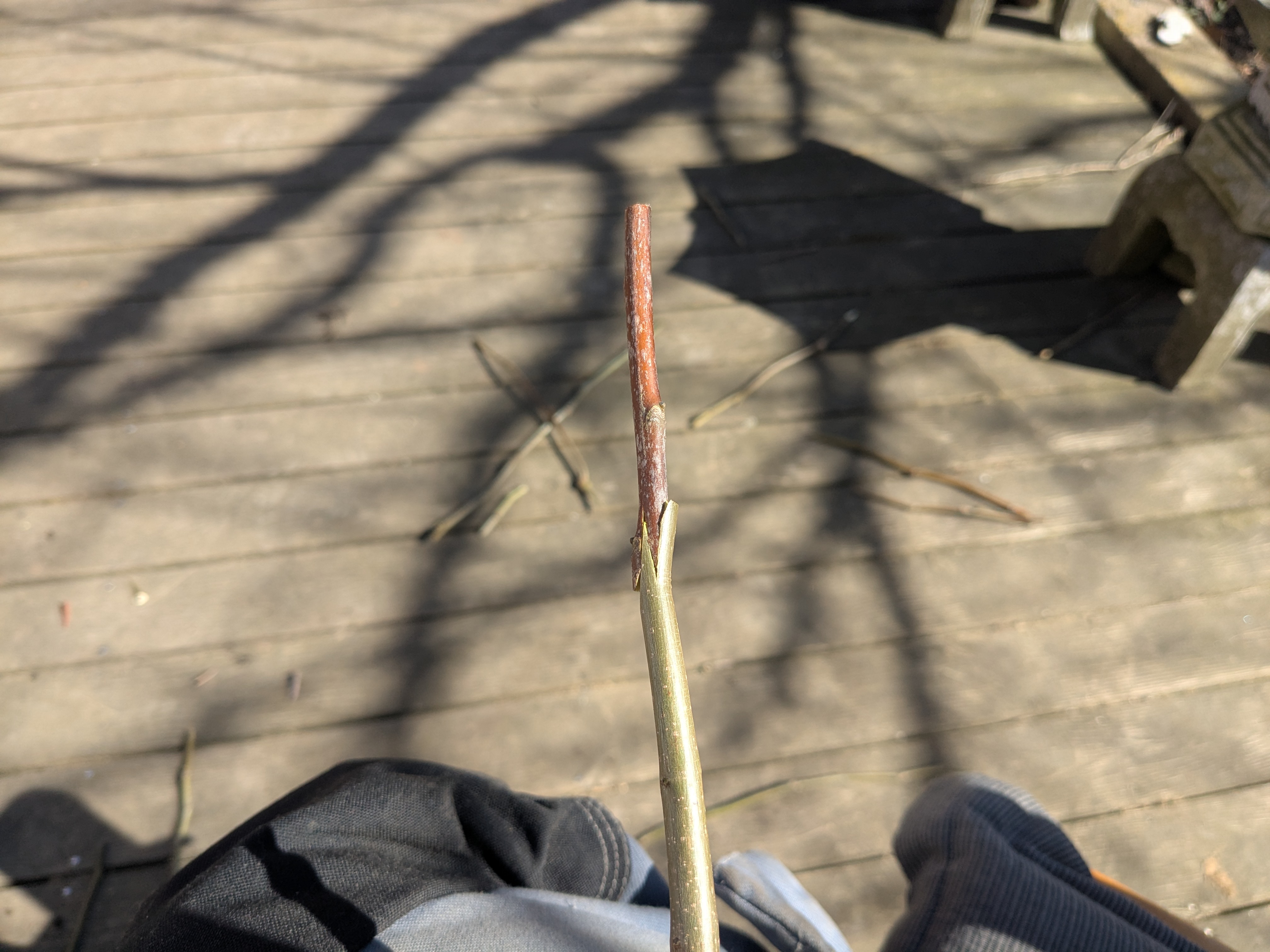 The z-graft is great when the scion and rootstock have the same size.
The z-graft is great when the scion and rootstock have the same size.
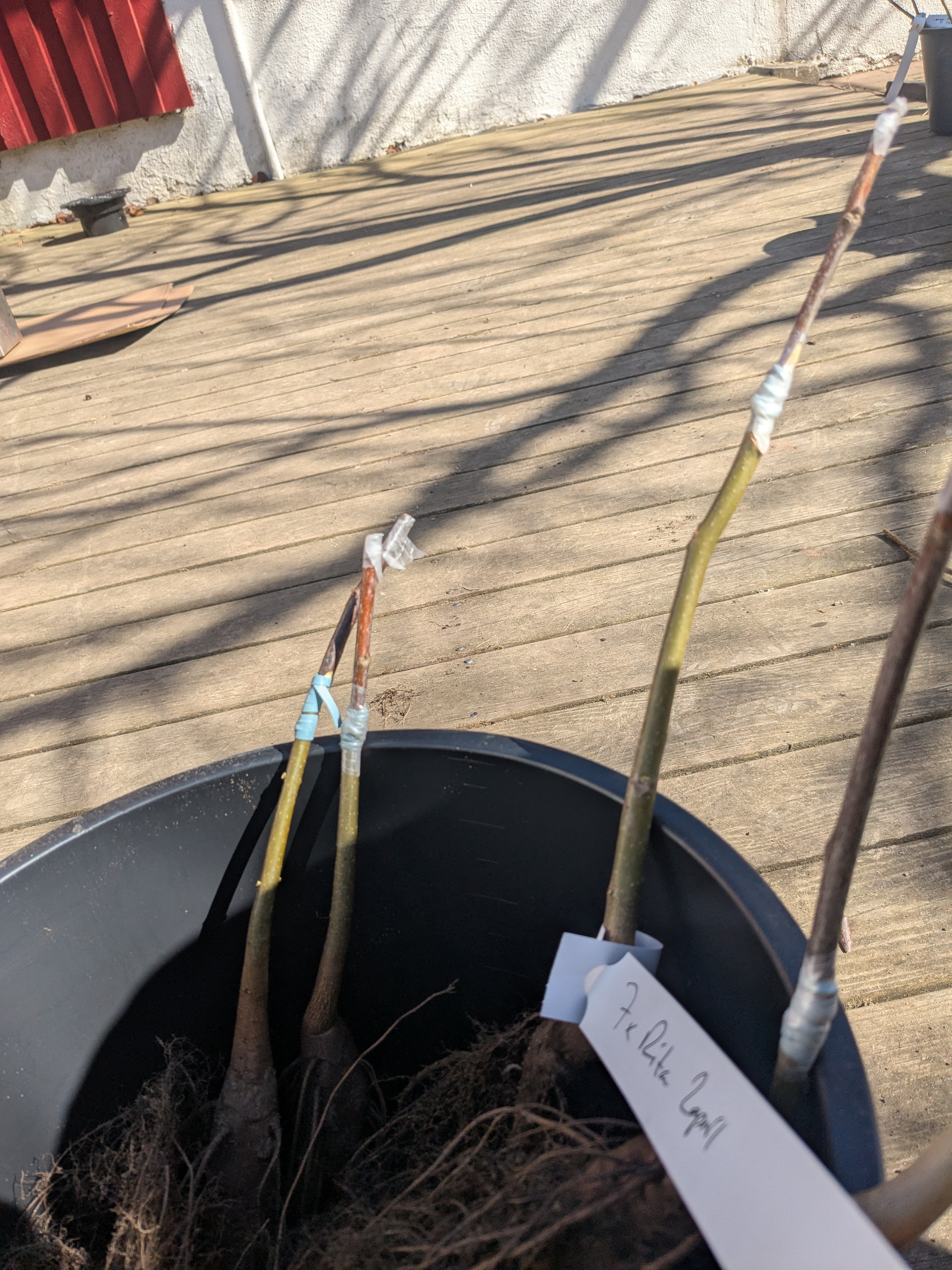 I usually use rubber band and tape before waxing the whole scion.
I usually use rubber band and tape before waxing the whole scion.
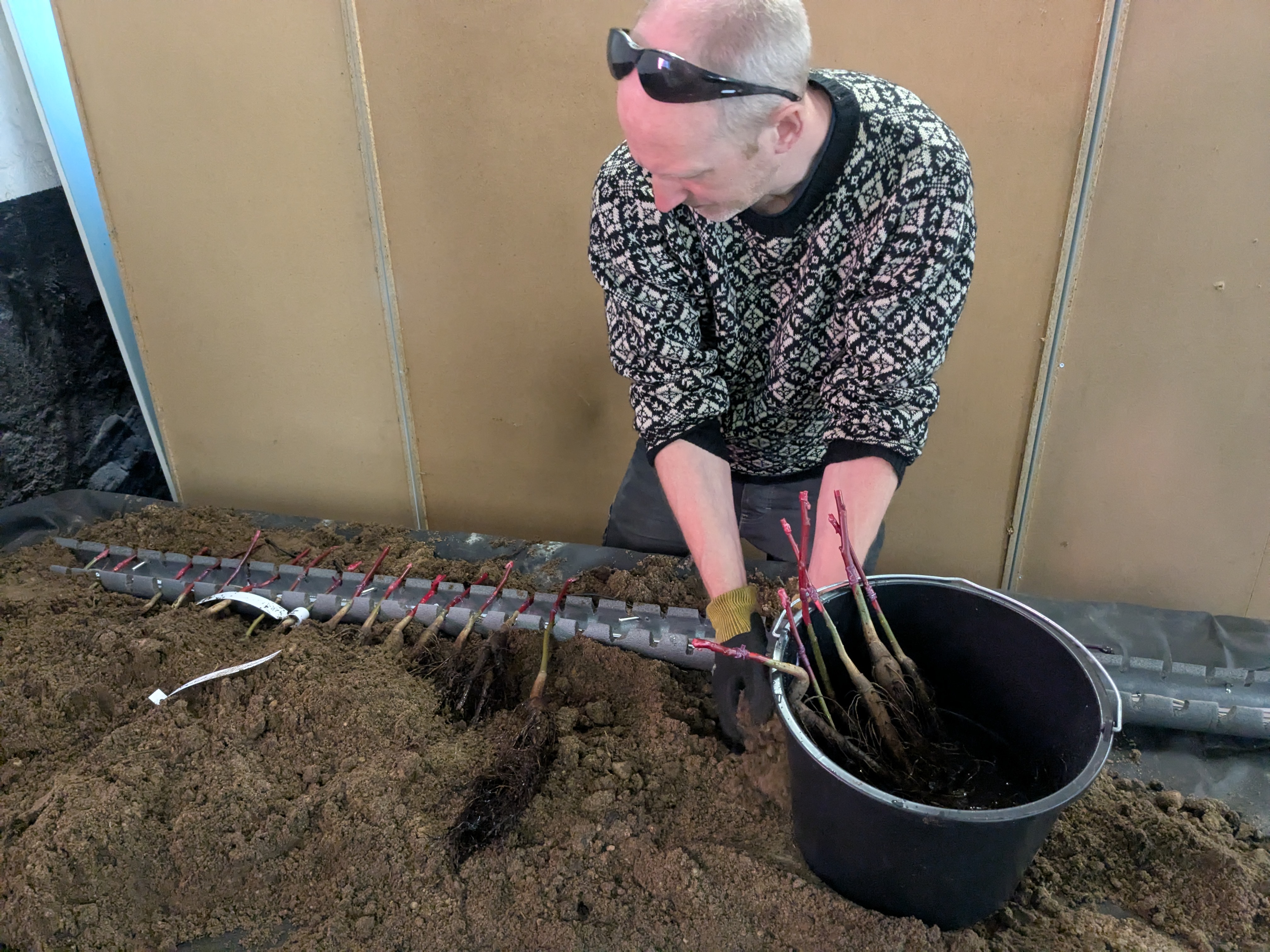 Then we pack the trees into sand and a hotpipe at 27C helps the graft to callus/heal.
Then we pack the trees into sand and a hotpipe at 27C helps the graft to callus/heal.
 Pieter came by and helped to sow walnuts for rootstock.
Pieter came by and helped to sow walnuts for rootstock.
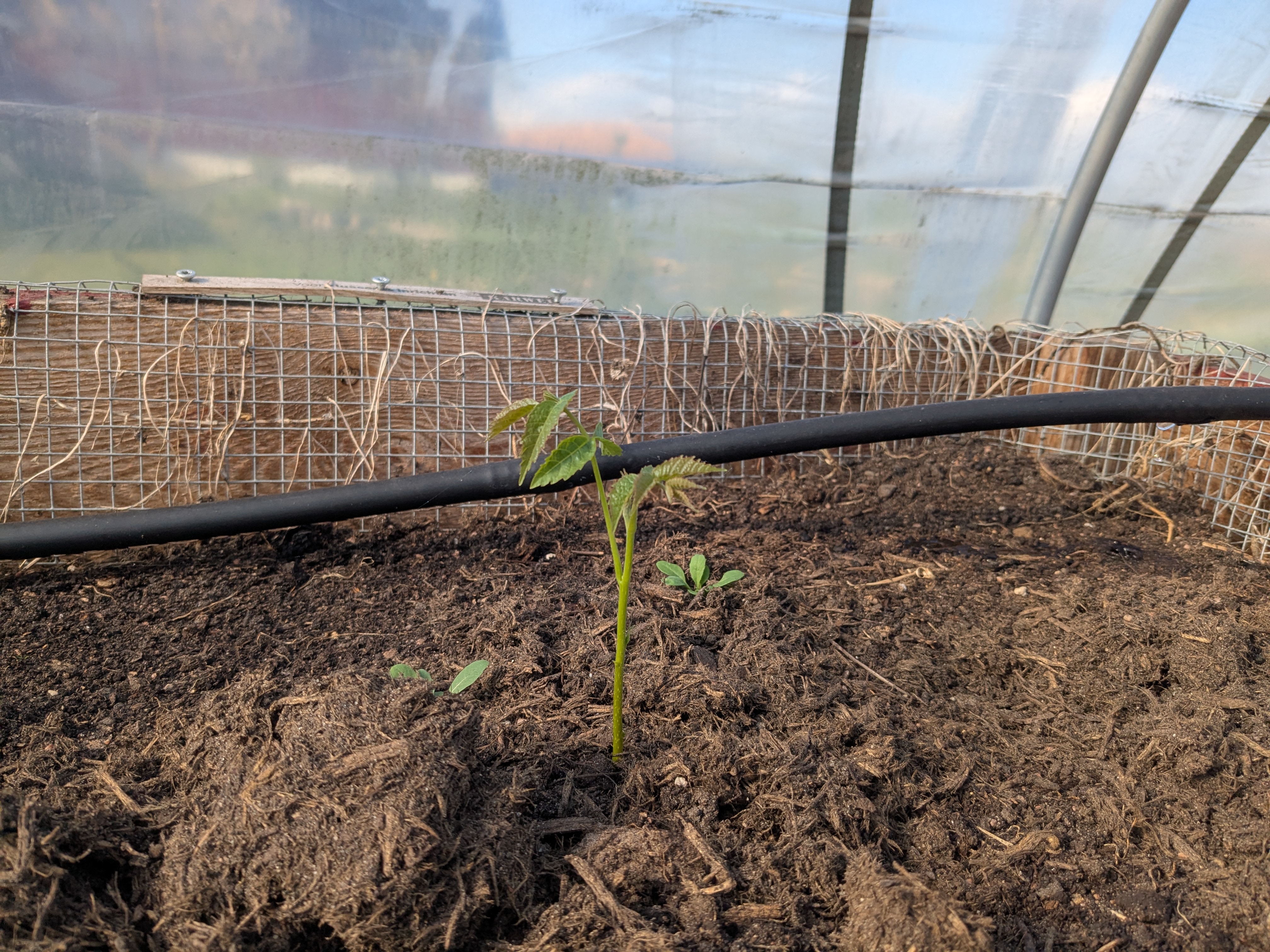 The first seedling walnut trees are coming out. These onese come from a disease resistant tree, so maybe I will let them grow out to trees to plant out.
The first seedling walnut trees are coming out. These onese come from a disease resistant tree, so maybe I will let them grow out to trees to plant out.
Veggie news
We are a bit behind schedule for the veggies this year, for various reasons. We have a few seedlings going that will be planted out next week, but some things work out great. Especially the perennial vegetables are dependable and are already in production. We had the first asparagus last week, rhubarb pie and started to use our climbing/vining spinach.
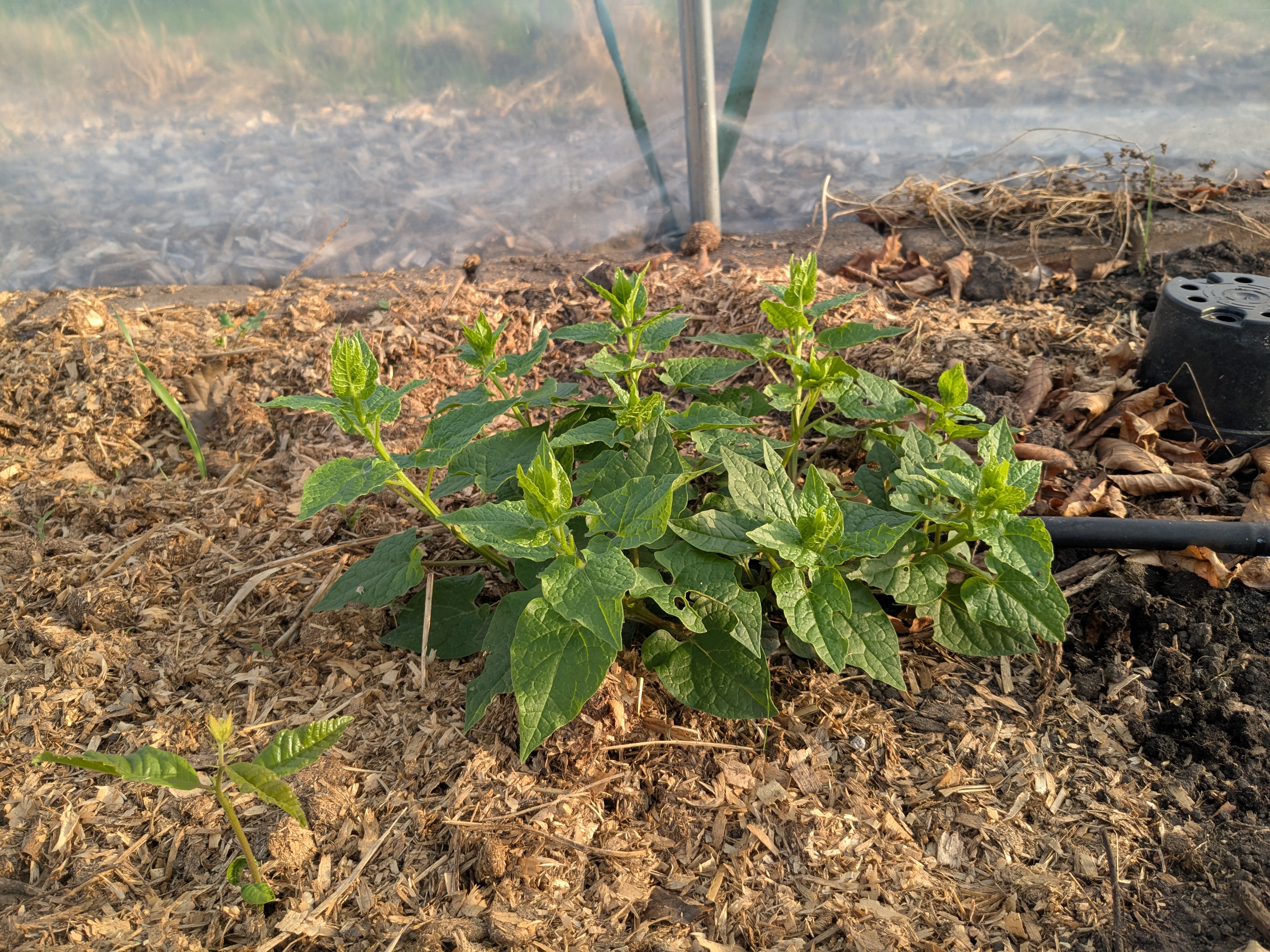 The vining spinach plant Hablizia comes great this year.
The vining spinach plant Hablizia comes great this year.
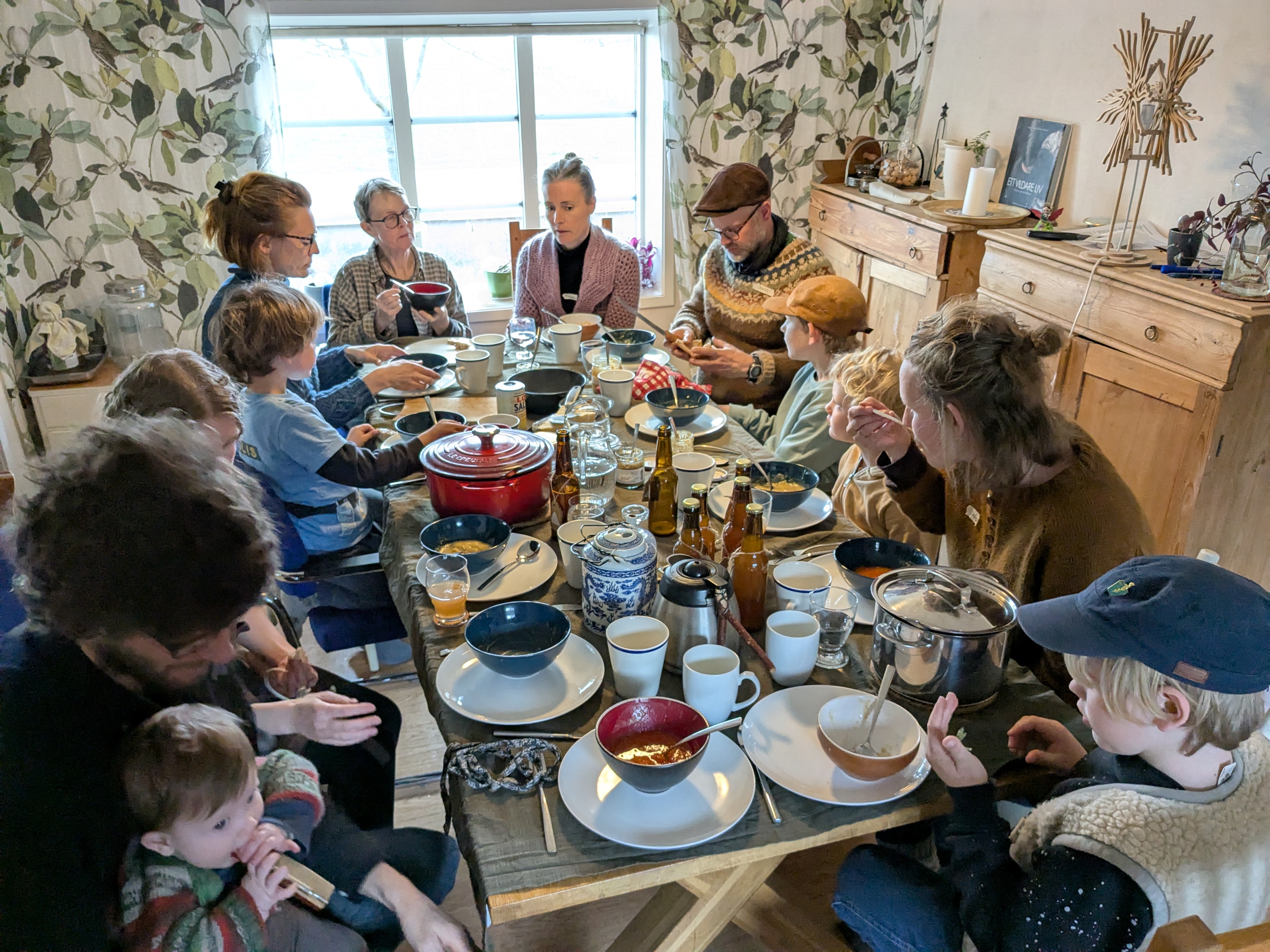 We had the monthly peasoup-and-pancakes gathering for transition people at our place. A record five kids joined this time.
We had the monthly peasoup-and-pancakes gathering for transition people at our place. A record five kids joined this time.
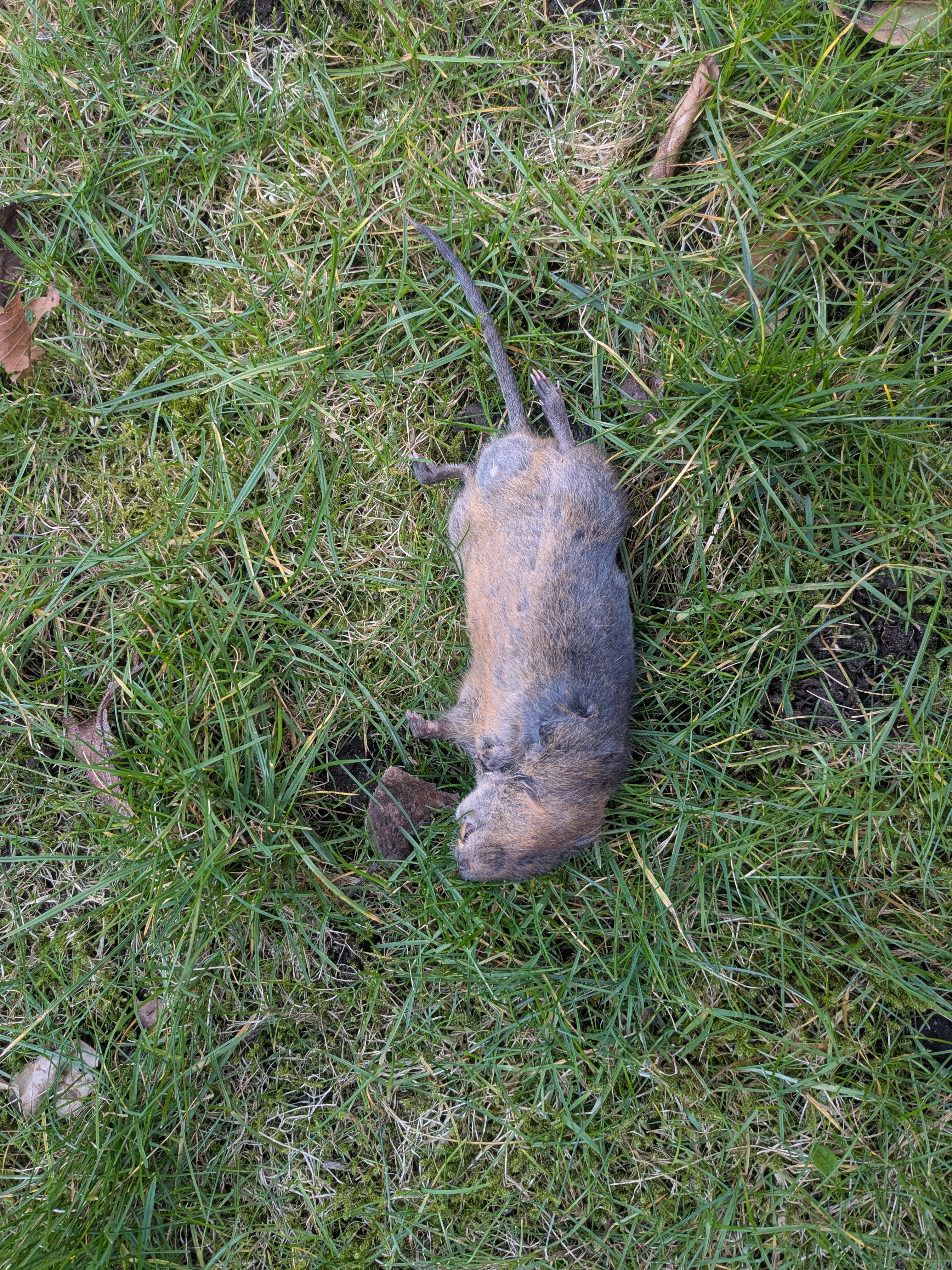 Finally - we celebrate Sir Sotis. Our new cat has captured at least two water voles!
Finally - we celebrate Sir Sotis. Our new cat has captured at least two water voles!